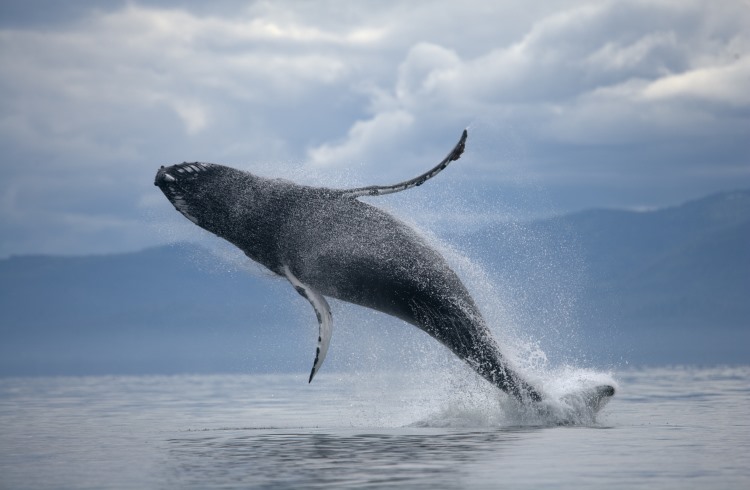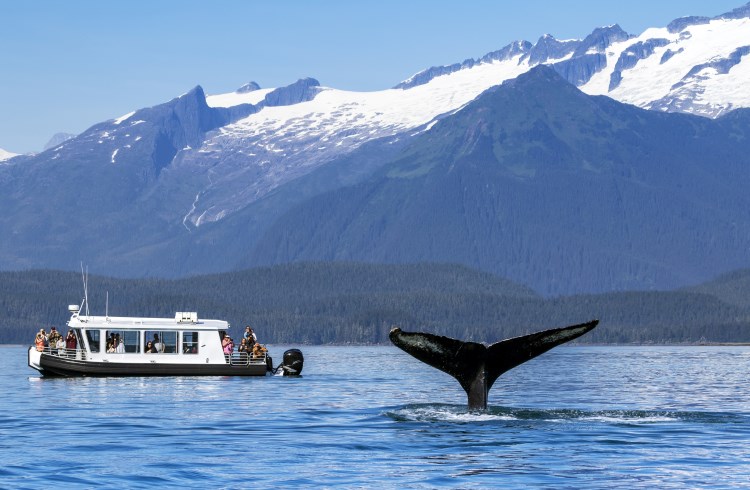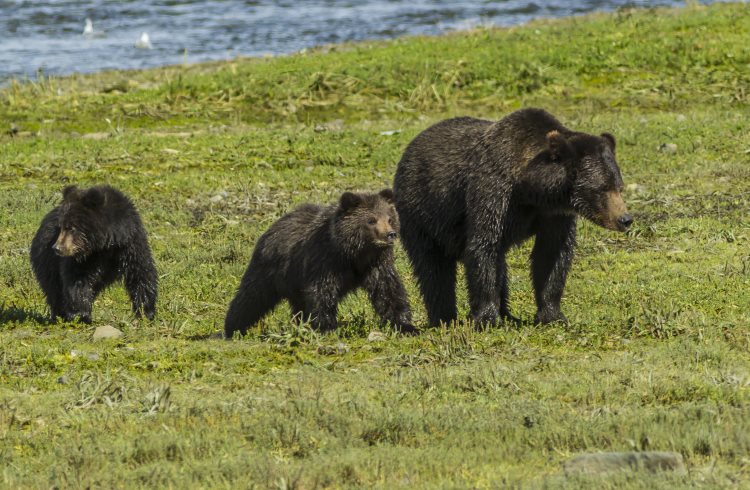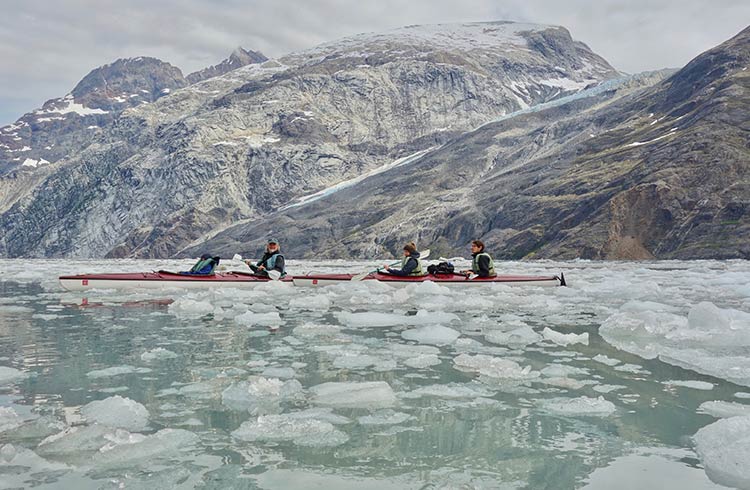Behind the Wheel of an Alaskan Whale-Watching Boat
One of a handful of women captaining whale boats in Juneau, Libby Baldwin shares the fears, the challenges, and the unrivaled joys of spending her days with humpback whales and orcas.
 Photo © Getty Images / Paul Souders
Photo © Getty Images / Paul Souders
It’s 7am in southeast Alaska. The sun has been up for hours already, but because we’re near Juneau, a capital city nestled in the world’s largest temperate rainforest, it’s raining, and the temperature has yet to reach 50°F (10°C). Nearly 300 days of precipitation each year keep the sky thickly blanketed in clouds. When the weather finally clears to reveal the sun, it transforms the vast stretches of channels, rivers, and old-growth forest into dazzling blues and greens; but most of the time, relentless, chilly rain is the name of the game.
This is the place I choose to live every summer in pursuit of my lifelong dream. I am a whale-watching captain, charged with an oft-overwhelming pair of responsibilities: to keep my passengers safe, and to successfully deliver an experience they’re likely to have just once in a lifetime.

What It Takes to Be a Whale-Boat Captain
I have the astonishing privilege of spending my work day in the company of humpback whales and orcas. I spent six summers working as a deckhand and tour guide before I was allowed to sit for my captain’s exam, a notoriously difficult four-part test administered by the Coast Guard. I was the only woman out of 25 students on the course, and I’m one of a handful of women driving boats in Juneau. Every woman who’s worn a deckhand’s knife on their belt or stood at a vessel’s helm has felt the leer of a suspicious old-timer or been asked, “You know what you’re doing, little girl?” But if you show them you’re tough enough, you’ll find friends for life.
As a captain, your surroundings are shifting constantly beneath you, and your fellow travelers are 50ft (15m) behemoths who spend 90% of their time completely out of sight, so letting your attention drift isn’t an option. You’re making small decisions every few seconds for hours, measuring the desire to get your guests as close to the whales as possible against putting them or the dozens of boats around you in danger. You’re doing this for three hours at a time, up to four times a day, six days a week. It is an exhaustion you feel deep in your bones and can be downright terrifying in bad weather. It's also the purest form of joy I’ve ever known.
Some days, I can’t see the boat in front of me through the fog, and my guests are snapping at me because they have yet to see a whale. Some days, I have to muster up excitement for the same whale I’ve seen all day. Some days, we see lots of whales and go home with zero tips. Some days, four-foot waves are lashing at the hull and it’s all I can do to keep the boat in a straight line; but every moment, I must keep smiling, no matter how wracked my nerves, because everyone looks to me for how they should feel.
But some days, it's sunny enough to see every glittering peak of the snowcapped Chilkat Mountains as we zoom along at 30 knots. Some days, a woman embraces me with tears in her eyes and thanks me, because she’s been waiting 50 years to see a whale. Some days, I’ll be sitting with engines off in silence, and suddenly, an entire family of orcas bursts to the surface not 5ft (1.5m) away, and a starry-eyed little girl tells me she wants to be a marine biologist someday. I was that little girl on whale-watching tours, and now I lead them. Those are the days that make every tough moment worthwhile.

Trip Notes
Whale-watching in Juneau
There’s no shortage of whale-watching companies in Juneau. Most run multiple trips, seven days a week, during the high season (May-September). Smaller boats offer a more intimate and adventurous experience, while a large vessel may have heated interiors and snack bars. The best operators voluntarily abide by “Whale Sense Alaska” guidelines, which include reduced speeds and time limits around whales.
A tour typically includes sightings of humpback whales and Steller sea lions (daily), orcas (occasionally), and bald eagles. Booking well in advance is recommended, especially in June, July and August. Cost varies by operator, but average US $110-150 for adults, US $100 for children, aged 3-12, and free for infants. Most tours offer add-ons including visits to the world-famous Mendenhall Glacier, city tours, nature hikes, and outdoor salmon-bake buffets.
Other Must-sees
Take a helicopter tour, then walk on a glacier or catch a ride with a dogsled team. Ride the Mount Roberts Tramway up 1,800ft (550m) for unbeatable views of the Gastineau Channel. Or for a truly unforgettable experience, book a seaplane ride and close encounter on nearby Admiralty Island, home to the world’s largest concentration of grizzly bears.
Getting There
Juneau is surrounded by mountains and a massive icefield, so there is no road access. Independent travelers must fly into Juneau International Airport or take a ferry from Washington state. Flying is much cheaper, but the ferries travel the Inside Passage, one of the most spectacular waterways in the world.
The World Nomads Travel Podcast - USA
Hear more from the author, plus follow the barbecue trail through the Deep South, strap on your skis in Colorado, and learn about the thriving Creole cowboy culture.
Related articles
Simple and flexible travel insurance
You can buy at home or while traveling, and claim online from anywhere in the world. With 150+ adventure activities covered and 24/7 emergency assistance.
Get a quote

No Comments